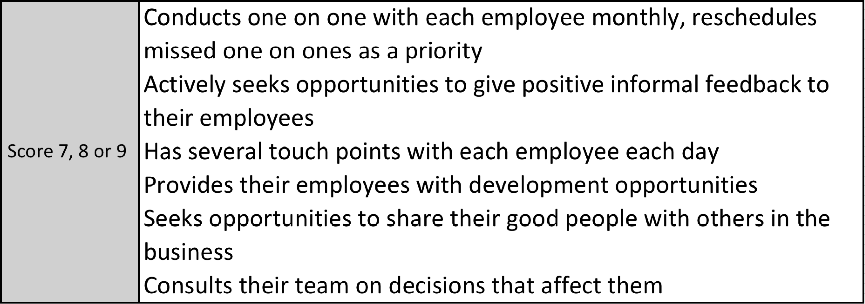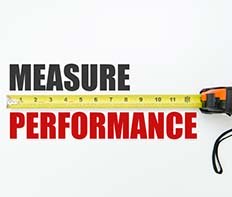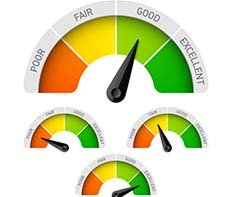Rating Methods Overview
Choosing the ideal rating methods for your employee evaluations depends on the number of people you have in each role your rating, the size of your organization and the benefit you receive from investing in your evaluation tools. You also need to consider the resources that you have available to develop your appraisal framework.
Rating methods vary considerably in their complexity ranging from a basic summation of performance written by the employee’s manager though to the use of complex behavioural descriptors to compare and contrast individual performance.
In practice you will find that most employee performance evaluations include a combination of two or more of the following rating methods.
- Graphic rating scale
- Global Rating
- Essay Method
- Behavioural anchored rating scales (BARS)
- Management by objectives
The Graphic Rating Scale
Graphic rating scales are used in many surveys, they normally consist of four or five rating criteria listed, such as
- Unsatisfactory
- Below expectation
- Satisfactory
- Above average
- Outstanding
An example of this type of rating scale

Typically there will be a range of performance criteria such as productivity, quality, teamwork, customer service, or concern for safety etc. The team leader or manager will rate each employee based on their own judgment of the employee’s performance.
This method is typically subject to considerable bias, which makes it hard to compare people doing different jobs or even the same job in different teams. There is generally no common criterion to determine the difference between each of the graduations on the rating scale.
To remove the bias some businesses assign criteria to some of the elements.
For example: a sales person may score a 3 if they meet their sales budget, exceeding budget by 10% scores a 4 and exceeding by 20% of more scores a 5, If they miss target by 10% they score a 3 and if they miss by 20% or more they score a 1.
You will find that most efforts to clarify the rating criteria tend to be on those rating criteria that are quantitative.
The Global Rating Methods
Some organizations use a single global rating of overall job performance to evaluate an employee. While this method would be expedient for the employer and may assist with decision such as paying bonus and allocating performance based pay increases, it is unlikely to provide the employee with any ideas on how to improve their performance.
For example

Note: The author does not recommended using a global rating scale for your employee performance evaluations
The Essay Method
In the essay method the appraiser writes a statement to describe the employee’s strengths and weaknesses and makes recommendations about the employee’s developmental needs. This method gives the appraiser some freedom to describe the employee’s unique characteristics, readiness for promotion and special talents.
This method is reliant on the appraisers writing skills and their ability to express their thoughts through the written word. A checklist of criteria to include in the evaluation will improve consistency, the checklist may include items such as
- Job performance
- Quality of work
- Teamwork
However, once this checklist is created you could simply use it to create a graphic rating scale and then provide a comments section for appraiser to add additional comments.
When used in conjunction with other methods, such as the graphic rating scale, the essay method does not require a lengthy statement and can add value to your employee performance evaluations.
Behaviourally Anchored Rating Scales (BARS)
The behavioural Anchored Rating Scale method is normally used only for the assessment of employee behaviour, for other performance criteria such as sales results other methods of appraisal are generally used.
As with the graphic rating scale, the behavioural anchored rating scale aims to assign a score to a range of performance criteria. However, the BARS method focuses only on observable behaviour and provides examples of this observable behaviour for each score. This makes it easier to have consistent rating across a large organization.
For example when assessing a leader on their passion for people you may consider



Management by Objectives (MBO)
Management by objectives is a process where longer-term goals are set, normally collaboratively, for the business as a whole. These goals are then cascaded down to each division or sub-unit of the business.
These goals tend to range from 12 month to three years. However, some shorter-term objectives can also be set.
You will find MBO is generally used to define the performance standards of people completing non-routine tasks such as management tasks or short-term projects.
How it works
- The manager and employee (the employee is normally a manager too) agree on the employee’s goals and how they will be measured.
- Once the goals are set they meet regularly to discuss progress towards these goals. It is also a good idea to discuss the method by which the goals will be achieved. During the discussions the manager provides feedback on progress towards interim goals.
- The manager and employee need to be open to removing goals that become inappropriate and to add new goals that become required.
- At the end of the agreed period the manager completes a review of the employee’s performance which is a summary of the ongoing conversations
In MBO Programs there also needs to be an assessment of the way in which the goals were achieved, for example
- Did the project manager follow the business project management processes?
- Were stakeholders engaged appropriately?
- Did the manager meet objectives in an ethical manner?
- Was the brand or long-term future of the business placed at risk?
In your employee performance evaluations, you will find that MBO programs tend to be used in conjunction with other appraisal systems to get a complete view of job performance.








